Abstract
A panel of 10 monoclonal antibodies was used to subgroup 326 strains of Legionella pneumophila serogroup 1. All but two strains could be classified into three major subgroups named after their representative strains Pontiac 1, Olda and Bellingham 1. Of the 50 isolates from patients, 44 representing 32 separate incidents were of the Pontiac subgroup. This subgroup was also found in 16 of 18 buildings epidemiologically associated with Legionnaires' Disease. In contrast, strains of the Olda subgroup predominated in buildings where no infections had occurred. In 9 of the 11 incidents where isolates were available from at least one patient as well as from the suspected environmental source, the monoclonal antibody reaction patterns of strains from patients were identical to those of one or more of their environmental counterparts.
Full text
PDF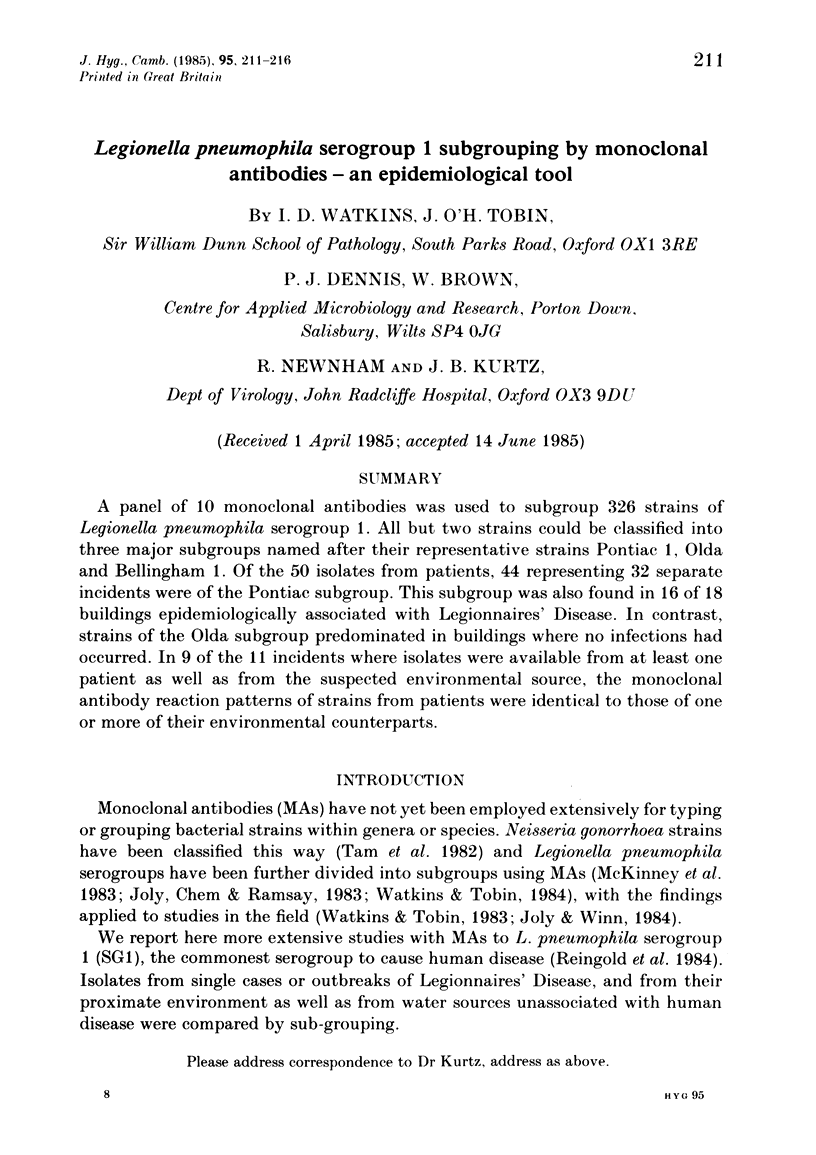
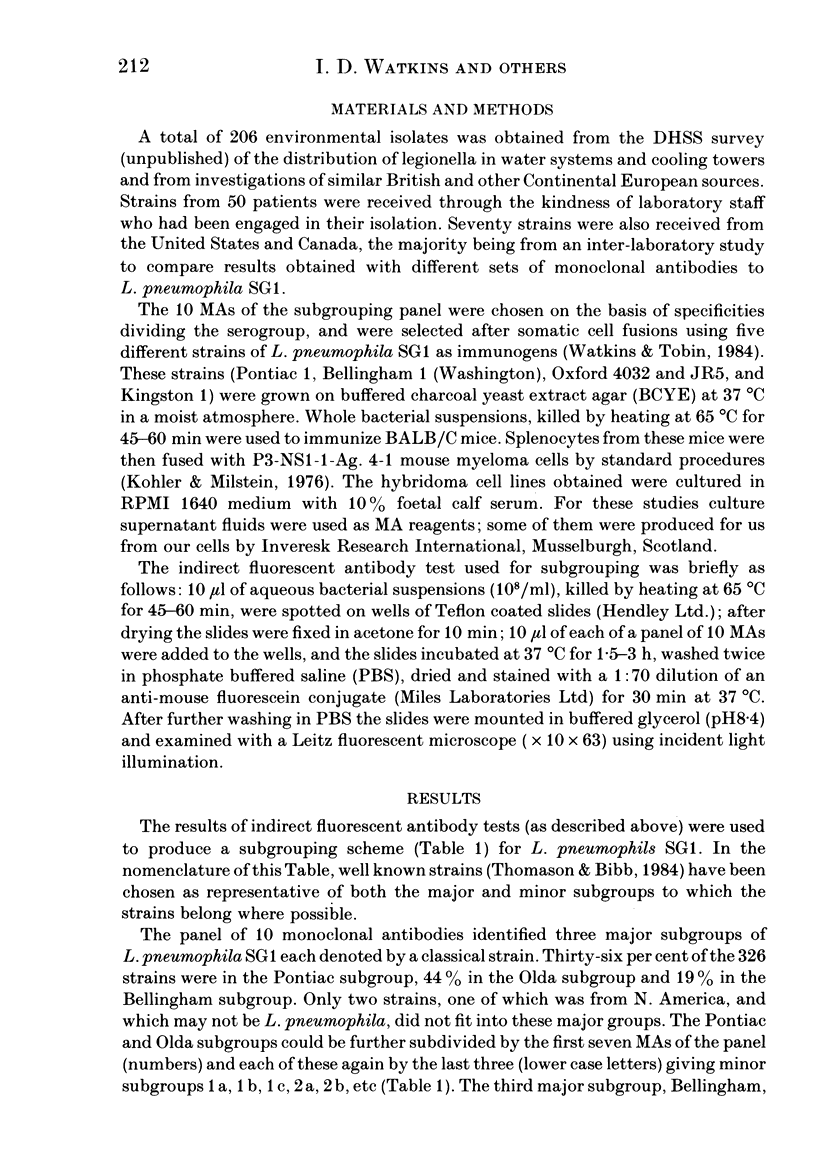
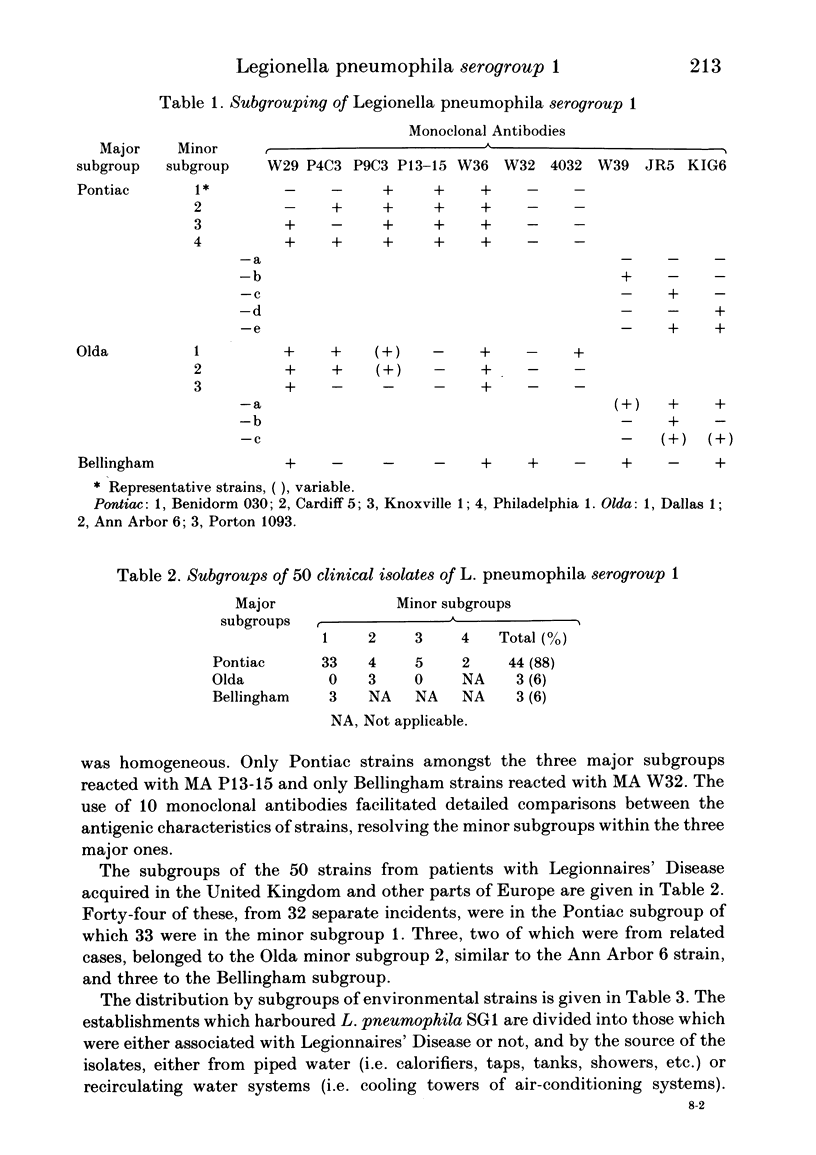
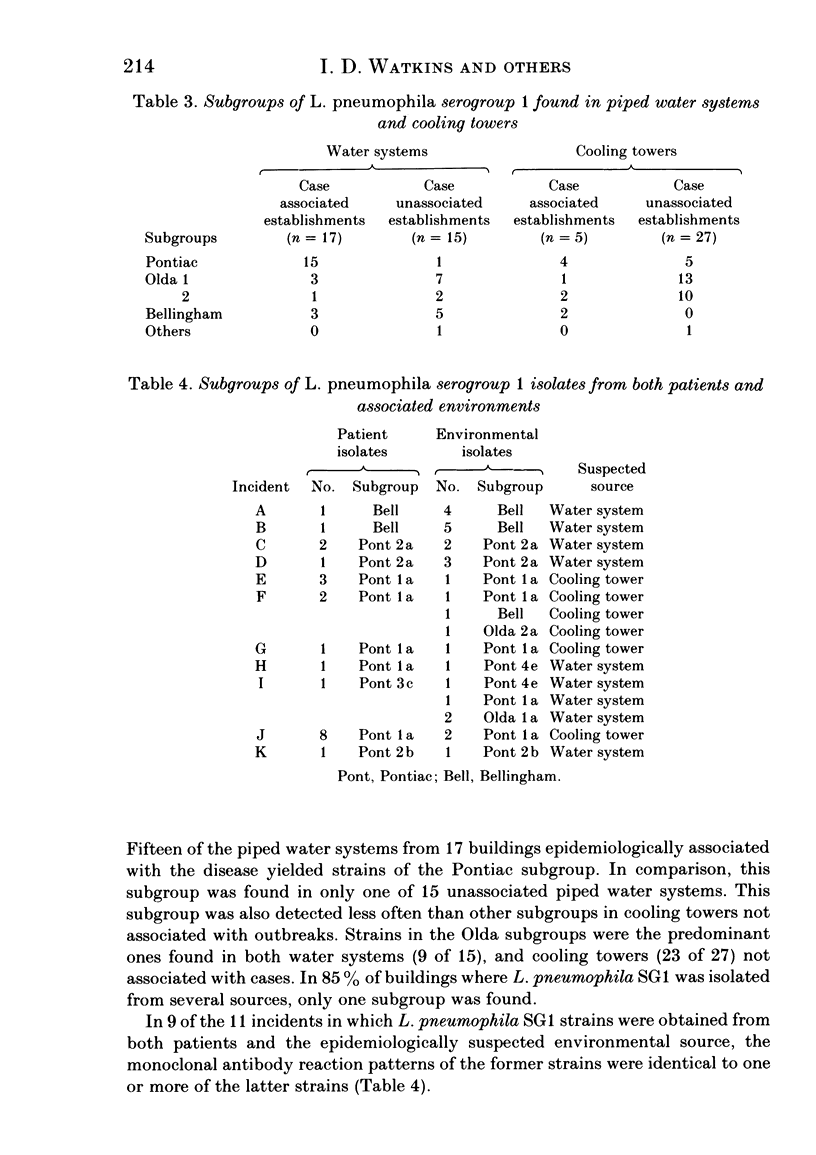
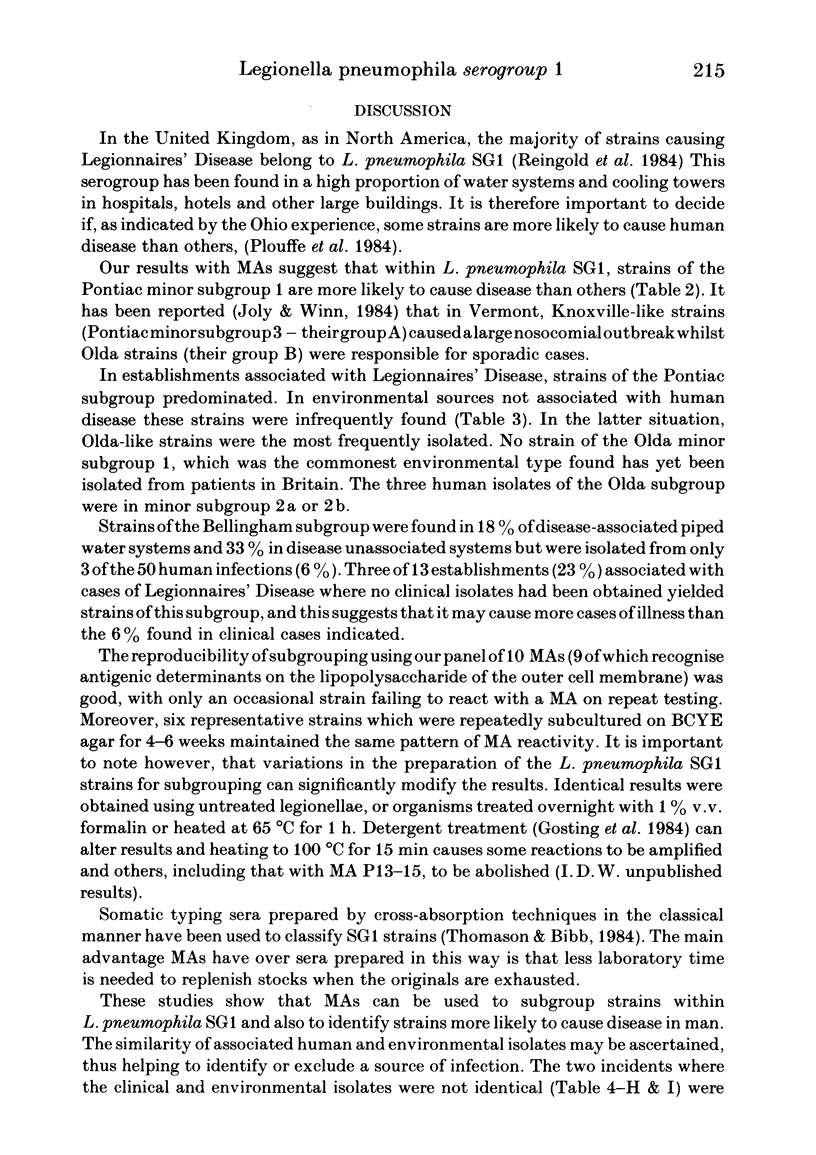

Selected References
These references are in PubMed. This may not be the complete list of references from this article.
- Gosting L. H., Cabrian K., Sturge J. C., Goldstein L. C. Identification of a species-specific antigen in Legionella pneumophila by a monoclonal antibody. J Clin Microbiol. 1984 Dec;20(6):1031–1035. doi: 10.1128/jcm.20.6.1031-1035.1984. [DOI] [PMC free article] [PubMed] [Google Scholar]
- Joly J. R., Chen Y. Y., Ramsay D. Serogrouping and subtyping of Legionella pneumophila with monoclonal antibodies. J Clin Microbiol. 1983 Nov;18(5):1040–1046. doi: 10.1128/jcm.18.5.1040-1046.1983. [DOI] [PMC free article] [PubMed] [Google Scholar]
- Joly J. R., Winn W. C. Correlation of subtypes of Legionella pneumophila defined by monoclonal antibodies with epidemiological classification of cases and environmental sources. J Infect Dis. 1984 Nov;150(5):667–671. doi: 10.1093/infdis/150.5.667. [DOI] [PubMed] [Google Scholar]
- Köhler G., Milstein C. Derivation of specific antibody-producing tissue culture and tumor lines by cell fusion. Eur J Immunol. 1976 Jul;6(7):511–519. doi: 10.1002/eji.1830060713. [DOI] [PubMed] [Google Scholar]
- McKinney R. M., Thacker L., Wells D. E., Wong M. C., Jones W. J., Bibb W. F. Monoclonal antibodies to Legionella pneumophila serogroup 1: possible applications in diagnostic tests and epidemiologic studies. Zentralbl Bakteriol Mikrobiol Hyg A. 1983 Jul;255(1):91–95. [PubMed] [Google Scholar]
- Reingold A. L., Thomason B. M., Brake B. J., Thacker L., Wilkinson H. W., Kuritsky J. N. Legionella pneumonia in the United States: the distribution of serogroups and species causing human illness. J Infect Dis. 1984 May;149(5):819–819. doi: 10.1093/infdis/149.5.819. [DOI] [PubMed] [Google Scholar]
- Tam M. R., Buchanan T. M., Sandström E. G., Holmes K. K., Knapp J. S., Siadak A. W., Nowinski R. C. Serological classification of Neisseria gonorrhoeae with monoclonal antibodies. Infect Immun. 1982 Jun;36(3):1042–1053. doi: 10.1128/iai.36.3.1042-1053.1982. [DOI] [PMC free article] [PubMed] [Google Scholar]
- Thomason B. M., Bibb W. F. Use of absorbed antisera for demonstration of antigenic variation among strains of Legionella pneumophila serogroup 1. J Clin Microbiol. 1984 Jun;19(6):794–797. doi: 10.1128/jcm.19.6.794-797.1984. [DOI] [PMC free article] [PubMed] [Google Scholar]


